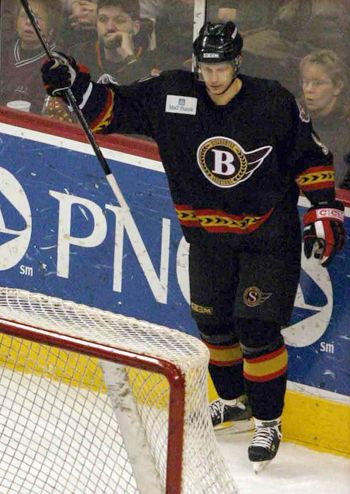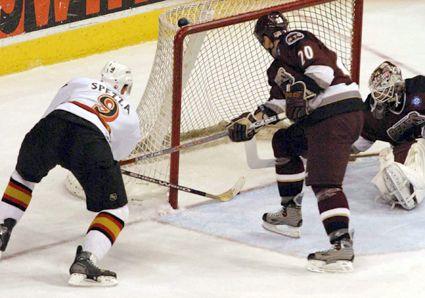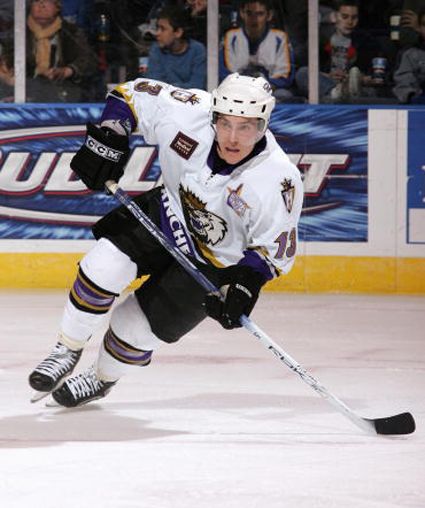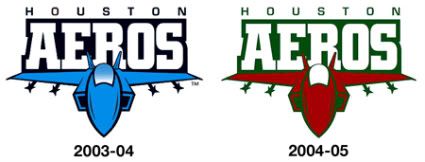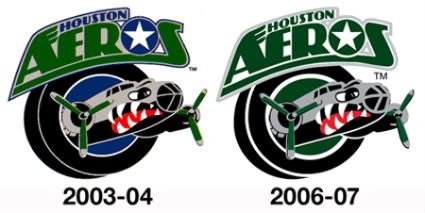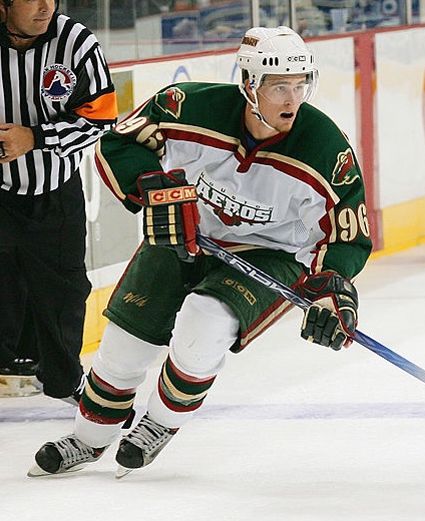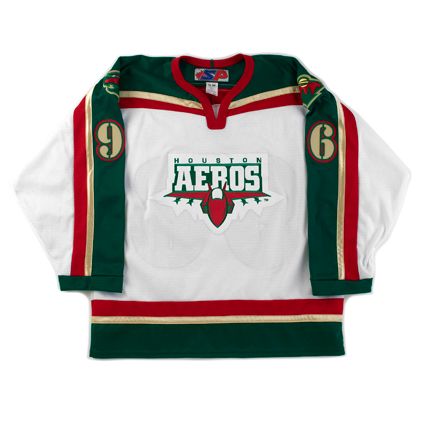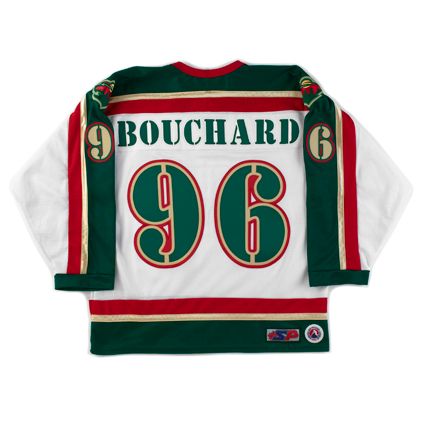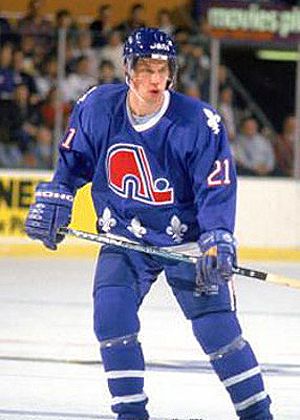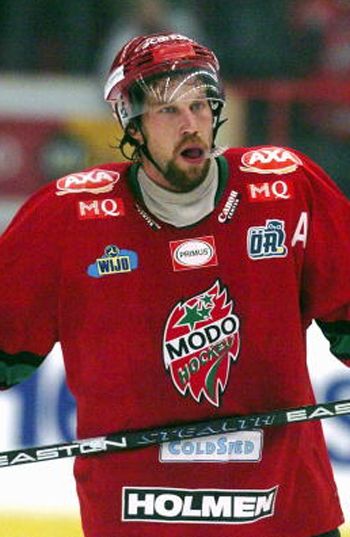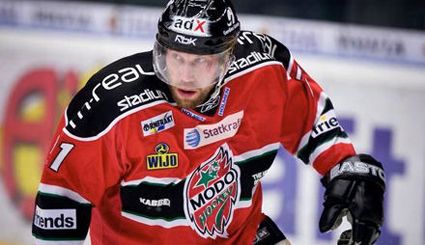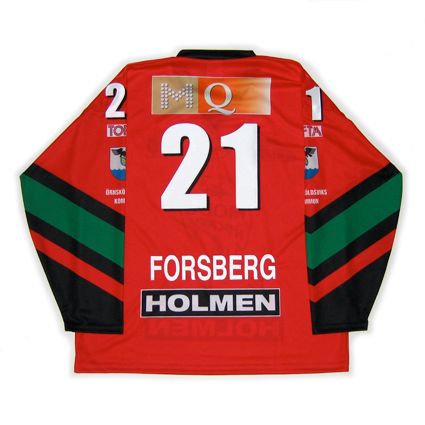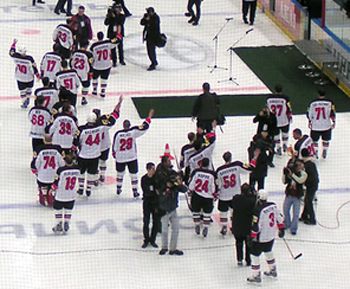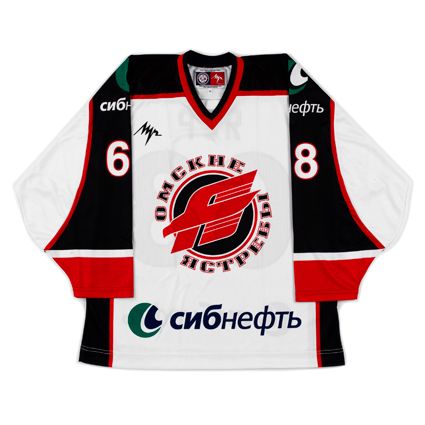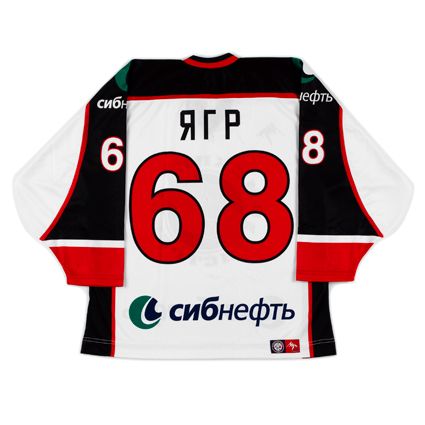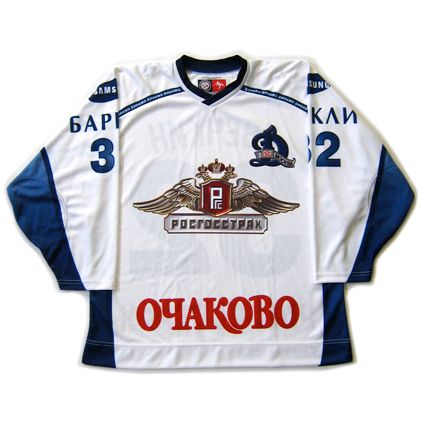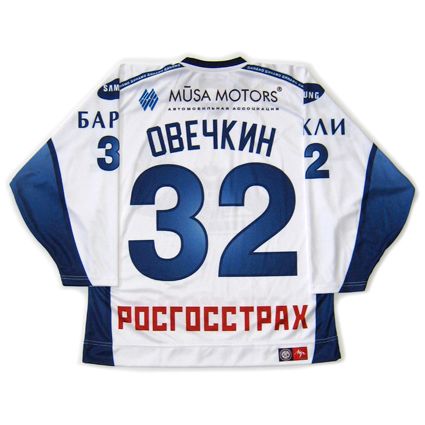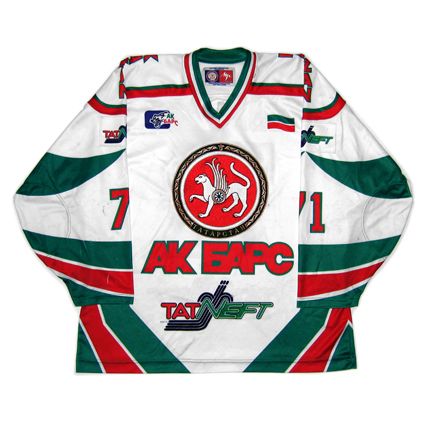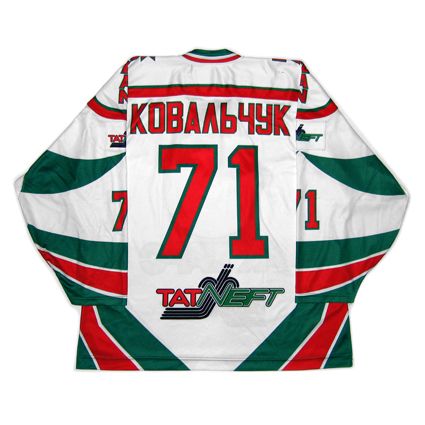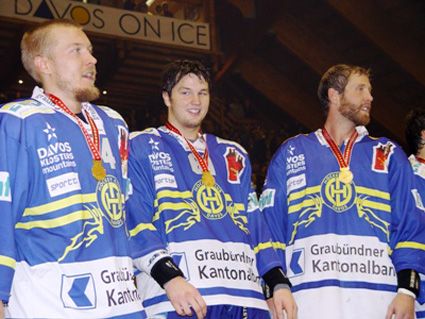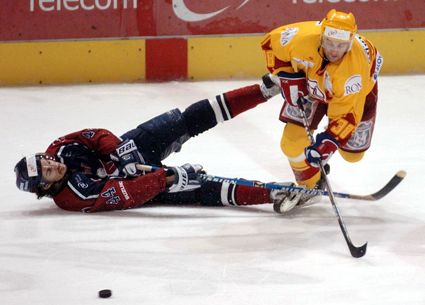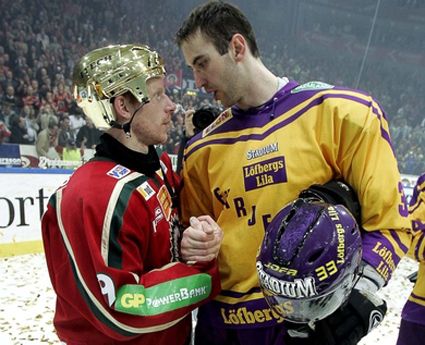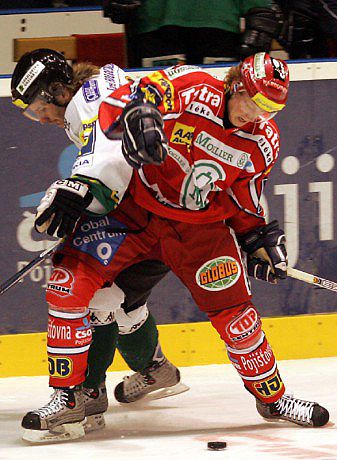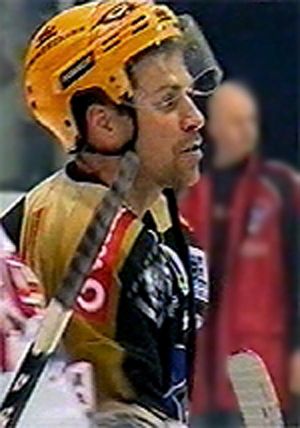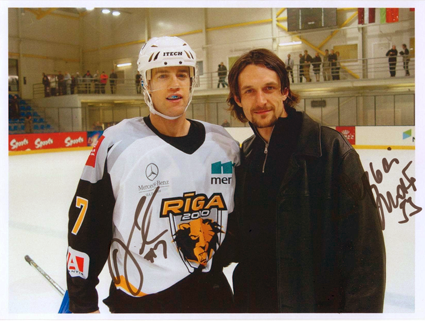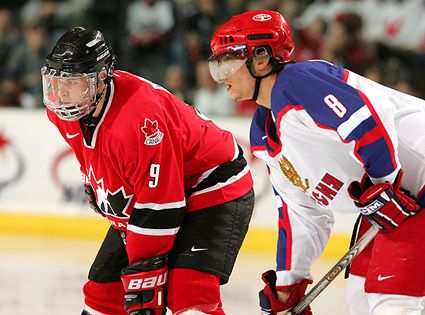Spezza had already played 33 games for the Ottawa Senators in 2002-03 and a full season for the Senators in 2003-04 when he found himself right back in the AHL during the lockout. While again with Binghamton, Spezza scored 32 goals and 85 assists to lead the league with 117 points and capture the Les Cunningham Award as the Most Valuable Player in the AHL.
Today's featured jersey is a 2004-05 Houston Aeros Pierre-Marc Bouchard jersey. This was the first season for this jersey style, as the Aeros were purchased by their parent club, the Minnesota Wild, who then proceeded to dress the Aeros jerseys in the Wild's basic jersey template, sadly replacing the modern take on the old WHA Aeros jerseys.The A-TeamHaving honed their skills in the AHL during the lockout, young players like Carolina's Eric Staal are becoming stars.Hurricanes sensation Eric Staal didn't adore every minute of his postgraduate American Hockey League year--getting stuck in a bus during a blizzard in Hartford does not build character as much as a profound distaste for the Greyhound life--but the extra season in the A has helped turn the 21-year-old center into a dangerous scorer and a surprise candidate for the Canadian Olympic team. Because of the lockout-driven demotion, Staal, a first-round draft pick in 2003 who seemed overmatched as a rookie with Carolina in '03-04, has gone from being a Lowell (Mass.) Lock Monster to a lock as a franchise NHL player. "Playing 22, 23 minutes a game in the A and having some success there made me a lot more confident," says Staal, who has led the Hurricanes to the top of the Southeast Division and through Sunday was tied for third in the league in scoring with 28 points.The lockout rocked the NHL, but among the ancillary benefits has been the emergence of young players who apprenticed for an additional season in the minors. The 6'3", 189-pound Staal, who added an extra gear to his already powerful skating, and the Senators' fabulous center, Jason Spezza, who improved decision-making, used the year to advance from promising to dominating. Meanwhile, a season with the AHL champion Philadelphia Phantoms transformed highly touted Flyers defenseman Joni Pitkanen, 22, from a Bambi on the blue line into a puck-rushing, physical force. "That was the old hockey they were playing down there, all that hooking and grabbing and holding," says Carolina general manager Jim Rutherford. "They learned how to fight through that.""Our team is a product of the lockout," says G.M. Dave Taylor, whose Kings nightly dress as many as nine players who were in the AHL last season. "These guys might have been eight- or nine-minute players if there'd been an NHL season, but last year they didn't have to shuttle back and forth. These AHL guys just picked up where they left off."The anomalous lockout year provided a window to the ways of old-time hockey. Three decades ago the then dominant Canadiens routinely let future stars marinate in the minors. In the 1990s, when the Devils were a power, they made young talent spend time at finishing school. ( Goalie Martin Brodeur had one full AHL season and 2001 Selke Trophy winner John Madden had two.) But in the salary-capped NHL, there seems to be less inclination to keep potential impact players in the AHL. "With the cap and the league becoming more competitive, teams will be looking for an early return [from players] more than ever," says Rutherford.With the retirements of greats like Brett Hull, Mark Messier and Scott Stevens, this postlockout season is a demarcation line in NHL history. While it is premature to proclaim Staal, Spezza and Pitkanen as the league's heir apparents, on their first report cards of '05-06, they all get an A.
The conversion of the jet to the Iron Range Red color of the Wild in 2004-05 only made matters worse, as the illustration of the jet looked enough like a Russian MiG-25 with it's square air inlets to begin with, but now rendered in a decidedly communist red color made the elimination of the original bomber logo from the jerseys completely unacceptable to the fans.
The Aeros used today's featured jersey for the 2004-05 and 2005-06 seasons, before bringing back the original bomber logo, only now with the former blue elements changed to green.
When the Aeros first changed over to the Minnesota Wild's jersey colors and template, despite the logo controversy, they did select a fantastic military-inspired stencil font for the names and numbers that set it apart from the parent club's furry numbers and in the process, brought the military theme back to the Aeros jerseys not seen since their beloved classic jerseys, last used in 2002-03.
Bouchard would lead the Aeros with 12 goals and 42 assists for 54 points despite only playing in 67 games that season.

